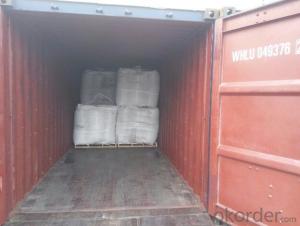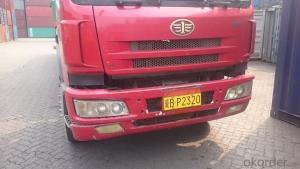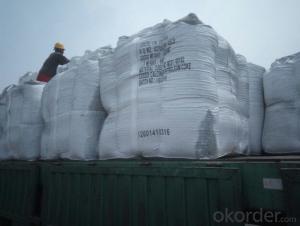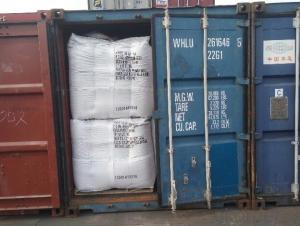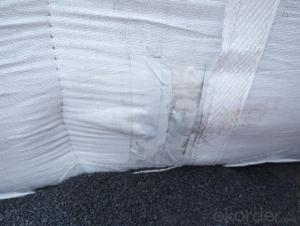Foundry Coke for Foundry Plant with ash 0.8%max
- Loading Port:
- Fuzhou
- Payment Terms:
- TT OR LC
- Min Order Qty:
- 21.6
- Supply Capability:
- 1016 m.t./month
OKorder Service Pledge
OKorder Financial Service
You Might Also Like
Brief Introduction
Foundry Coke is the main fuel of melting iron in the oven. It can melt the materials in the over, make the iron reach great heat, and keep good air permeability by sustain stock column. Thus, the foundry coke should have the characteristics of big block, low reactivity, small porocity, enough anti-crush strengh, low ash and low sulphur.
The coke handled by our cooperation is made from superior coking coal of Shanxi province. Provided with the advantages of low ash, low sulphur and high carbon. Our coke is well sold in European, American, Japanese and South-east Asian markets. Our owned Coke plant are located in Shanxi Province and supplying of you many kinds of coke. We are serving the world
we supply Foundry Coke long-term, its characteristic is best strength, low sulfur and phosphorus,thermal stability.
Specifications:
ASH % | 8% max | 10% max | 12% max |
V.M.% MAX | 1.5% max | 1.5% max | 2% max |
SULFUR % | 0.65% max | 0.65% max | 0.7% max |
MOISTURE | 5% max | 5% max | 5% max |
Size | 80mm-120mm,80-150,100-150mm, or as request | ||
Features
1. Our quality is always quite good and stable which is producing and packing according to customers' requirements.
2. Putting Client profile into first, achieved mutual benefit.
3. Good partner on business. It's a good and wise choice for customers' to purchase from us. It's our great honor to cooperate with you. It is more -widely used around the world
4. We can supply documents as follows:
- bill of loading,
-Invoice,
-Packing List
-Insurance
-standard inspection pictures of the container as specified by INSPECTORATE
-or more requested by buyer.
Pictures
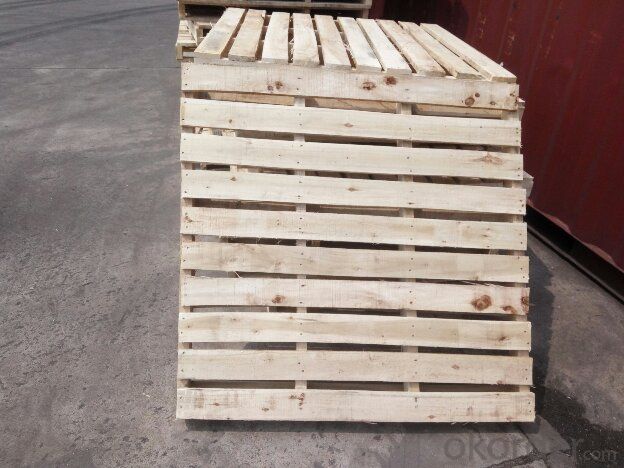
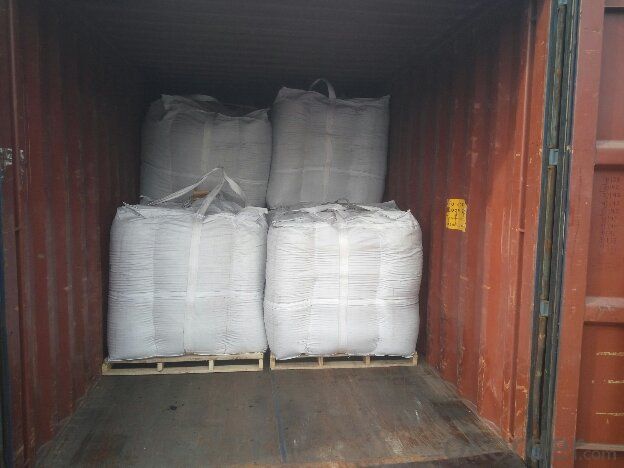
FAQ
1. What is the packing?
In 25kg bag/ In jumbo bags without pallet/ Two jumbo bags with one pallet/ or as customers’ request
2. What is the production capacity?
10 thousand tons per month
3 What is payment term?
Irrevocable LC at sight/ 20% down payment by T/T and 80% against BL copy byT/T/ or to be discussed
4 What is the service?
We will send sample to the third party(CIQ, CCIC, SGS,BV or to be discussed) for checking, and present the test certificate and loading repot of shipment.
- Q: What is carbon PC?
- Polycarbonate (PC), polycarbonate is a molecular chain containing [O-R-O-CO] chain thermoplastic resin according to the molecular structure of the ester can be divided into aliphatic, alicyclic and aromatic type of fat, which has the practical value of the aromatic polycarbonate, and bisphenol A polycarbonate as the most important, molecular weight is usually 3-10 million.Polycarbonate, English Polycarbonate, referred to as PC.PC is a kind of amorphous, odorless, non-toxic, highly transparent colorless or slightly yellow thermoplastic engineering plastics, has excellent physical and mechanical properties, especially excellent shock resistance, tensile strength, bending strength, compressive strength and high creep; small size is stable; good heat resistance and low temperature resistance, mechanical properties, stability in a wide range of temperature dimensional stability, electrical properties and flame retardant properties, can be used for a long time at -60~120 deg.c; no obvious melting point, a molten state at 220-230 DEG C; the molecular chain rigidity, melt viscosity and high water absorption resin; small, small shrinkage, high precision, good dimensional stability, permeability of films is small; self extinguishing materials; stable to light, but not UV resistance, good weather resistance; oil resistance, acid and alkali resistance, no oxygen acid and amine, Ketones are soluble in chlorinated hydrocarbons and aromatic solvents. They are easy to cause hydrolysis and cracking in water for a long time. Because of their poor fatigue resistance, they are prone to stress cracking, poor solvent resistance and poor wear resistance
- Q: What are the impacts of carbon emissions on the stability of coastal areas?
- Coastal areas are greatly affected by carbon emissions, which create numerous challenges for both the environment and the communities living there. Sea-level rise is one of the most notable consequences, triggered by the melting of polar ice caps and the expansion of seawater due to rising global temperatures. As greenhouse gases like carbon dioxide accumulate in the atmosphere, they trap heat and warm the planet. Consequently, glaciers and ice sheets melt, contributing to the rise in sea levels. Sea-level rise directly endangers coastal regions, leading to increased erosion, flooding, and the loss of valuable land. As water levels climb, shorelines recede, eroding beaches and cliffs, and jeopardizing coastal infrastructure and habitats. This erosion not only threatens the stability of coastal ecosystems but also puts human settlements at risk, resulting in the displacement of communities and property loss. Additionally, the surge in carbon emissions causes ocean acidification, as excess carbon dioxide is absorbed by the ocean, decreasing its pH levels. Acidic waters have detrimental effects on marine life, particularly coral reefs, shellfish, and other organisms that rely on calcium carbonate for their shells and skeletons. With increased ocean acidity, these organisms struggle to form and maintain their protective structures, ultimately leading to the degradation of coastal ecosystems and loss of biodiversity. Furthermore, carbon emissions intensify extreme weather events like hurricanes and tropical storms. Warmer ocean temperatures provide more energy for these storms, making them stronger and more destructive. These events can cause significant damage to coastal infrastructure, including buildings, roads, and utility systems. Moreover, they can result in loss of life and livelihoods, further increasing the vulnerability of coastal communities. In conclusion, carbon emissions have extensive impacts on the stability of coastal areas. Sea-level rise, ocean acidification, and the intensification of extreme weather events all contribute to the deterioration of coastal ecosystems, loss of biodiversity, erosion, and coastal flooding. These consequences not only threaten the environment but also pose significant risks to human settlements. Urgent measures for mitigation and adaptation are necessary to safeguard coastal areas and the communities depending on them.
- Q: What are the different types of carbon steel?
- Carbon steel, known for its strength, durability, and affordability, is widely utilized in various industries. It is a versatile material with multiple types, each possessing unique properties and applications. 1. Low Carbon Steel: This form of carbon steel contains a minimal amount of carbon, usually up to 0.25%. It is extensively used due to its affordability, ease of fabrication, and weldability. Low carbon steel finds applications in construction, automotive manufacturing, and general engineering. 2. Medium Carbon Steel: With a carbon content ranging from 0.25% to 0.60%, medium carbon steel offers increased strength and hardness compared to low carbon steel. It is commonly employed in machinery parts, axles, gears, and shafts that require enhanced toughness and wear resistance. 3. High Carbon Steel: High carbon steel contains a carbon content of 0.60% to 1.00%. It possesses excellent strength and hardness but is less ductile and more brittle than low and medium carbon steels. High carbon steel is frequently used in cutting tools, springs, and high-strength wires. 4. Ultra-High Carbon Steel: This type of carbon steel contains a carbon content exceeding 1.00%, typically ranging from 1.20% to 2.50%. It exhibits extremely high hardness and is often employed in specialized applications such as knives, blades, and tools that demand exceptional sharpness and wear resistance. 5. Carbon Tool Steel: Carbon tool steel refers to a group of steels that incorporate additional alloying elements like chromium, vanadium, or tungsten. These alloying elements enhance the steel's hardness, wear resistance, and heat resistance, making it suitable for tool and die making, cutting tools, and molds. It is important to note that the strength, hardness, and other properties of steel are determined by its carbon content. The selection of the appropriate type of carbon steel depends on the specific application, desired characteristics, and manufacturing requirements.
- Q: What is carbon fiber reinforced plastic?
- Carbon fiber reinforced plastic (CFRP) is a composite material made up of carbon fibers embedded in a polymer matrix, typically epoxy resin. It combines the lightweight and high strength properties of carbon fibers with the versatility and durability of plastic. CFRP is widely used in various industries, including aerospace, automotive, and sports, due to its exceptional strength-to-weight ratio, resistance to corrosion, and excellent stiffness.
- Q: Carbon content of fly ash and fly ash roasted vector what is the relationship?
- The higher the carbon content, the greater the adsorption, the lower the activity index.In the process of coal ash processing, there are still many places to use the fly ash mill. The carbon content of fly ash is related to the boiler property and combustion technology. China's newly built modern power plant, the content of fly ash can be reduced to l% ~ 2%, and some power plants may also be as high as 20%.
- Q: What are the properties of carbon-based ceramics?
- Carbon-based ceramics, also known as carbon ceramics, are a unique class of materials with a combination of properties that make them highly desirable for various applications. These properties include: 1. High temperature resistance: Carbon-based ceramics exhibit exceptional thermal stability, allowing them to withstand extremely high temperatures without undergoing significant degradation or structural changes. This property makes them ideal for use in high-temperature environments such as aerospace components, brake systems, and heat shields. 2. Low density: Carbon ceramics are characterized by their low density, which contributes to their lightweight nature. This property is advantageous in applications where weight reduction is critical, such as in the automotive and aerospace industries, as it can enhance fuel efficiency and improve overall performance. 3. High hardness and wear resistance: Carbon-based ceramics possess exceptional hardness and wear resistance, making them highly durable and capable of withstanding abrasive forces. This property makes them suitable for use in cutting tools, bearings, and other applications where resistance to wear and erosion is required. 4. Excellent chemical resistance: Carbon ceramics are known for their excellent chemical resistance, which allows them to resist corrosion and degradation when exposed to various aggressive chemical environments. This property makes them valuable in chemical processing, semiconductor manufacturing, and other industries where resistance to chemical attack is crucial. 5. Good electrical conductivity: Unlike traditional ceramics, carbon-based ceramics exhibit good electrical conductivity due to the presence of carbon in their composition. This property makes them useful in applications that require both thermal insulation and electrical conductivity, such as heating elements, electrodes, and electronic components. 6. Tailorable properties: Carbon ceramics offer the advantage of being able to tailor their properties to specific requirements by varying the composition and processing methods. By adjusting factors such as carbon content, porosity, and microstructure, the mechanical, thermal, and electrical properties of carbon ceramics can be customized to meet specific application needs. In summary, carbon-based ceramics possess a unique combination of properties, including high temperature resistance, low density, high hardness, excellent chemical resistance, good electrical conductivity, and the ability to tailor their properties. These properties make them valuable materials in a wide range of industries, including aerospace, automotive, chemical processing, and electronics.
- Q: What is the carbon footprint of different activities?
- The carbon footprint of different activities refers to the amount of greenhouse gas emissions, particularly carbon dioxide, that are produced as a result of those activities. It varies depending on the type and scale of the activity. Activities such as driving a car, flying, using electricity, and consuming meat and dairy products typically have higher carbon footprints compared to activities such as walking, cycling, using renewable energy, and eating plant-based foods. The carbon footprint of an activity is an important measure to assess its environmental impact and to make informed choices towards reducing our carbon emissions.
- Q: What are the different types of carbon-based food additives?
- Some examples of carbon-based food additives include caramel color, vegetable carbon (activated charcoal), and carbon black. These additives are used for various purposes such as coloring, flavor enhancement, and texture improvement in food products.
- Q: What are the consequences of increased carbon emissions on global food security?
- Increased carbon emissions have significant consequences on global food security. One of the most immediate impacts is the alteration of weather patterns and increased frequency of extreme weather events such as droughts, floods, and heatwaves. These events can lead to crop failures, reduced agricultural productivity, and loss of livestock, ultimately resulting in food shortages and price volatility. Carbon emissions also contribute to climate change, leading to long-term shifts in temperature and precipitation patterns. Higher temperatures can accelerate the growth and reproduction rates of pests and diseases, which can devastate crops and livestock. Additionally, changes in rainfall patterns can disrupt the timing and quantity of water available for irrigation, further reducing agricultural productivity. Furthermore, carbon emissions contribute to the acidification of oceans, which negatively affects marine ecosystems and the livelihoods of communities dependent on fishing and aquaculture. This can lead to a decline in fish stocks, threatening the availability of a vital source of protein and nutrition for millions of people. Another consequence of increased carbon emissions is the loss of biodiversity. Climate change can disrupt ecosystems, leading to the extinction or migration of plant and animal species. This loss of biodiversity reduces the resilience and adaptability of agricultural systems, making them more vulnerable to pests, diseases, and environmental stresses. Ultimately, the consequences of increased carbon emissions on global food security are far-reaching and complex. They include decreased agricultural productivity, increased food prices, food shortages, and reduced access to nutritious food. Addressing carbon emissions and mitigating climate change is crucial to ensure a sustainable and secure global food system for future generations.
- Q: What are the impacts of carbon emissions on the stability of kelp forests?
- Kelp forests are significantly affected by carbon emissions, which have a major impact on their stability. The increased levels of carbon dioxide in the atmosphere lead to ocean acidification, causing harmful effects on kelp. When carbon dioxide dissolves in seawater, it creates carbonic acid, which lowers the ocean's pH. This acidification prevents kelp from growing and developing properly, making them more vulnerable to stressors and reducing their overall stability. Ocean acidification affects kelp physiology in various ways. It impairs their ability to absorb essential nutrients like nitrogen and phosphorus, which are crucial for their growth. This nutrient deficiency weakens the kelp, making them more susceptible to diseases, predation, and damage from storms. Moreover, acidified seawater hinders the development of kelp spores, which impairs their ability to reproduce and regenerate kelp forests. Furthermore, carbon emissions contribute to the increase in sea temperatures, which also harm kelp forests. As the climate warms, kelp may face thermal stress, resulting in slower growth rates and higher mortality rates. Warmer waters also create favorable conditions for harmful algae species, which can outcompete kelp for space and resources, further destabilizing kelp forests. The stability of kelp forests is crucial because they provide numerous ecosystem services. They act as important carbon sinks, absorbing and storing large amounts of carbon dioxide from the atmosphere. Kelp forests also serve as habitats and nursery grounds for a wide range of marine species, including commercially important fish and invertebrates. They play a vital role in maintaining the health and productivity of coastal ecosystems by reducing coastal erosion, improving water quality, and supporting biodiversity. To mitigate the impacts of carbon emissions on kelp forests, it is crucial to reduce our carbon footprint by transitioning to cleaner and more sustainable energy sources. Additionally, protecting and restoring coastal habitats, including kelp forests, can enhance their resilience to climate change and other stressors. Implementing sustainable fishing practices and establishing marine protected areas can also help preserve and maintain the stability of kelp forests and the valuable ecosystem services they provide.
Send your message to us
Foundry Coke for Foundry Plant with ash 0.8%max
- Loading Port:
- Fuzhou
- Payment Terms:
- TT OR LC
- Min Order Qty:
- 21.6
- Supply Capability:
- 1016 m.t./month
OKorder Service Pledge
OKorder Financial Service
Similar products
Hot products
Hot Searches
Related keywords
